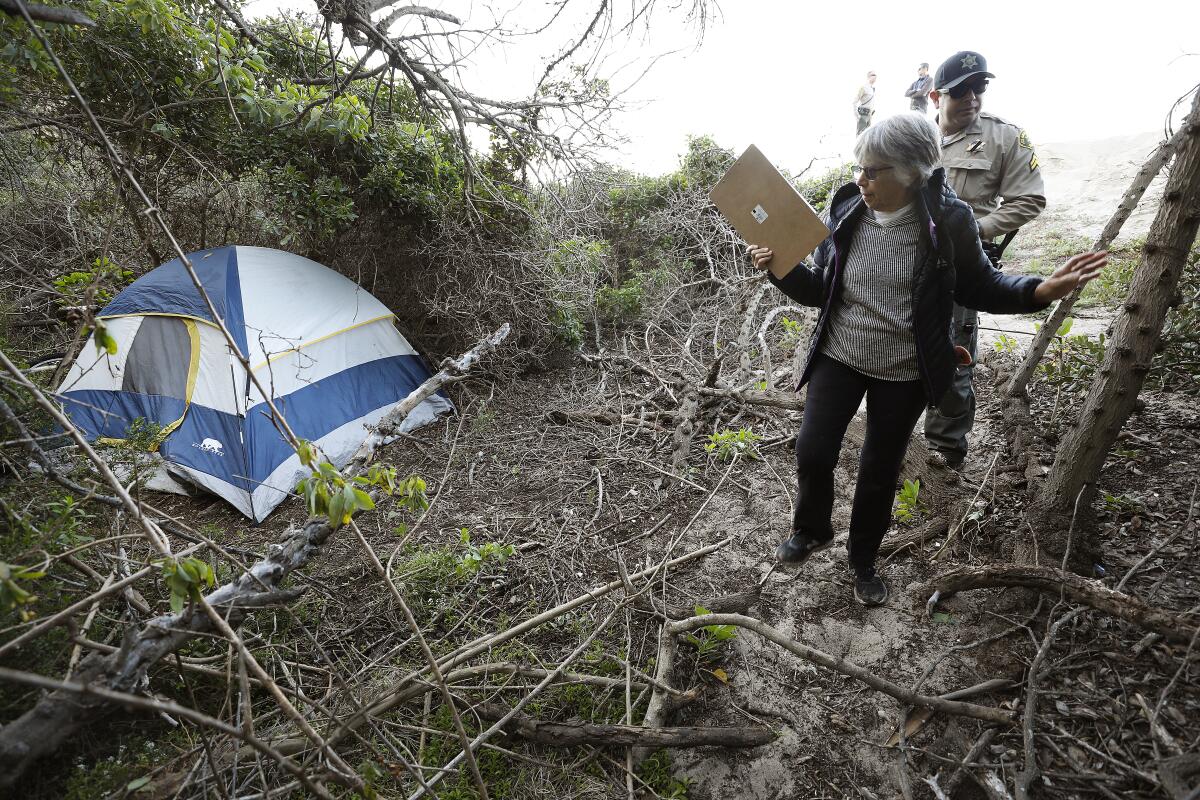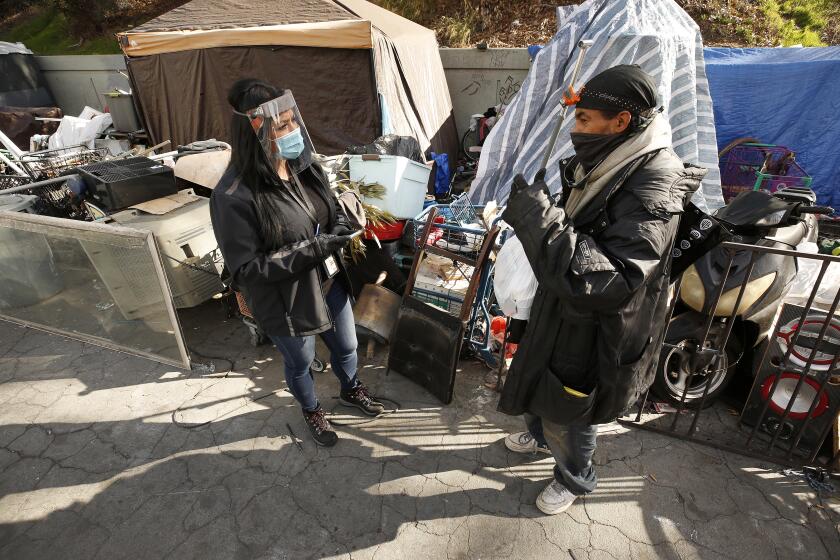A new database gives a sharper picture of homelessness across California

- Share via
Everywhere in California, homeless outreach workers spend part of their day at their phones or computer screens keying information about their clients.
The information is essential for keeping track of people living on the street and is required by the U.S. Department of Housing and Urban Development as a condition of receiving federal funds.
Until now, it has had little value in guiding public policy on homelessness or, for that matter, informing the public. The information was kept in 44 separate databases, each maintained by one of the 44 federally mandated agencies, called continuums of care, that plan and deliver homeless services across the state.
On Wednesday, California launched a public website that, for the first time, combines all 44 databases, and reports some basic statewide statistics that describe homelessness and local efforts to address it.
It shows, for example, that outreach workers provided services to 280,130 people in the state last year. That far exceeds the estimated total of just over 161,500 people who are homeless on a given night and gives some insight into the number of people who are homeless for brief periods during the year, and receive help getting back on their feet, but don’t show up in the annual counts conducted in January.
Some see the cancellation of L.A. County’s annual count of homeless people as an opportunity to improve a process that is inherently blunt and slow.
The new database, called the Homeless Data Integration System, was created to help state policy makers see homelessness broadly and to provide an analytical tool to measure how effective individual agencies and and their services are.
“For the first time, we will have the necessary data and tools to better coordinate statewide services” said Ali Sutton, deputy secretary for homelessness under the Business, Consumer Services and Housing Agency.
In its infancy, the public website provides only limited detail. While it reports that 91,626 homeless people obtained permanent housing in 2020, it cannot break that down further to distinguish between those who obtained subsidies or reunited with families.
But that’s coming. Sutton said the website will be updated quarterly with more analysis. Among other things, she said, the state wants to know what happens to homeless people who receive permanent housing.
“What is being launched today is the beginning,” she said.
More to Read
Sign up for Essential California
The most important California stories and recommendations in your inbox every morning.
You may occasionally receive promotional content from the Los Angeles Times.








